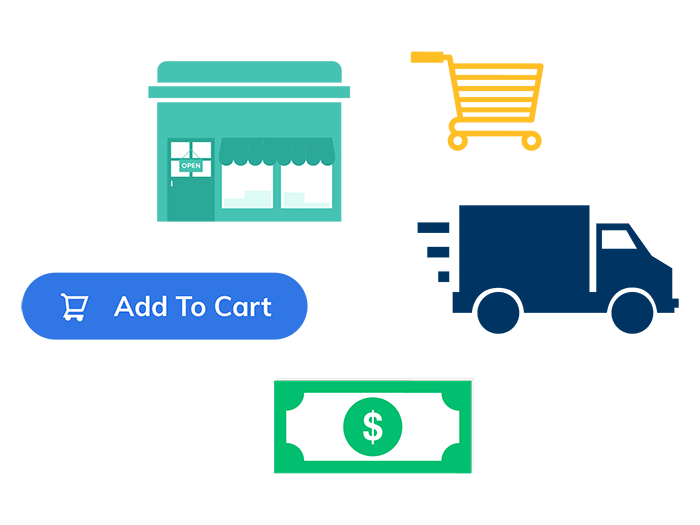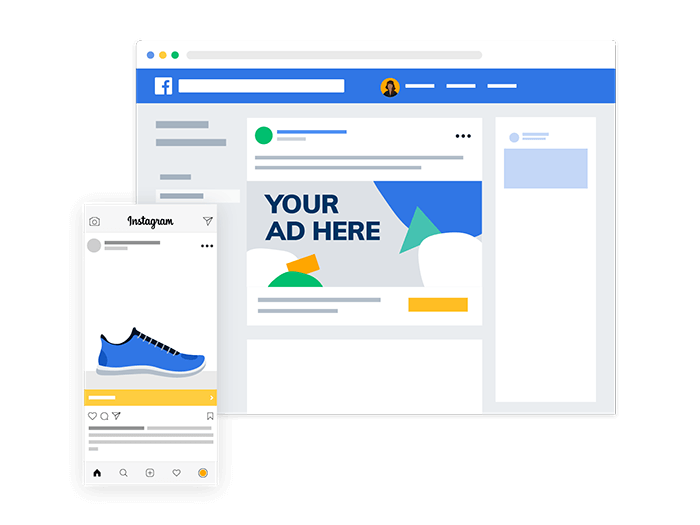It would be hard to overstate how much our day-to-day lives have been disrupted over the past few weeks. As a result of the COVID-19 pandemic, businesses across the country have temporarily closed, and millions of people are working from home for the very first time. While these drastic actions are necessary to slow down the spread of the disease, they’ve also caused severe economic disruption.
With so many venues shuttered, the country’s unemployment rate is spiking. Recent figures show a record number of
more than 10 million Americans filing for unemployment in March. Data collected in March shows how these colossal changes are affecting the economy. What we see are clear changes, significant challenges, and a few opportunities.
How Consumers Spend is Changing

Most of the country is under official stay at home orders, forcing most non-essential businesses to close and forcing consumers to alter their traditional shopping habits. Many consumers are trying new online shopping services for the first time, or increasing their frequency of use.
A March survey by Valassis found that
42% of respondents are shopping more online. The same
survey found that:
- 10% of respondents have tried buy-online-pickup-in-store (BOPIS) for the first time.
- 13% of consumers are using BOPIS more often.
- 14% of respondents have used grocery delivery services for the first time.
- 13% have increased the frequency in which they are using grocery delivery.
With sit-down restaurants closing across the country, consumers are also finding new ways to enjoy the food they love. Valassis found that:
- 10% of survey respondents have tried restaurant delivery service for the first time.
- 19% have increased their usage of restaurant delivery service.
- Another 27% have not used restaurant delivery, but are considering it.
These findings track with our recent shared experiences. We all need to eat, but we’re interested in finding new ways to meet those needs while, at the same time, reducing our risk of contracting the virus. However, while more people are turning to online shopping, that increased activity isn’t spread equally.
Where Consumers Spend is Changing

Another
recent survey by Civis found a 10-30% increase in online spending across grocery and non-grocery purchases as of March 18, 2020. But a closer look at the data reveals that those increases aren’t benefiting everyone. The Civis survey detailed a significant spending shift towards at-home activities like entertainment services, fitness, grocery, and pet supplies. Conversely, the survey found substantial decreases in spending on major household purchases (like furniture), restaurant takeout, electronics, and clothes.
According to
Search Engine Land, “The data suggest that the money being spent online is a redistribution of aspects of traditional offline spending.”
New Ways to Reach Consumers

There are opportunities amid these challenges. The Vlassis survey found that 39% of respondents have increased their social media usage during the pandemic. That gives advertisers new avenues to reach more potential consumers.
Shoppers have experienced shortages for some products and difficulty buying others. While Vlassis found that 48% of respondents are continuing to buy their usual brands, there’s evidence that these changes have opened consumers up to new options. The Vlassis survey showed:
- 13% are buying a mix of new brands along with their typical purchases.
- 13% are “taking the opportunity to discover new brands.”
- 19% are buying what’s available.
Amazon’s Challenges Present Opportunity

The COVID-19 crisis has put tremendous pressure on Amazon as consumers shift more to online purchasing and rush to buy hard-to-find essentials. In response,
Amazon’s recent announcement that it was prioritizing the delivery of essential products to its warehouses has also forced consumers out of their regular shopping habits. As product availability becomes less reliable on the platform, consumers are increasingly buying products directly from sellers.
Wholesale changes like this don’t happen very often. Savvy businesses should work to introduce themselves to new potential buyers while, at the same time, making the buying and fulfillment process simple and reliable.
What’s on the Horizon?

While news of the virus is currently all-consuming, the crisis will eventually pass. However, this experience will likely permanently change some aspects of consumer behavior. A recent article in the
South China Morning Post explores how Chinese consumers responded to their COVID-19 outbreak, which may presage America’s experience.
Experts predict online shopping will continue to grow in China as consumers shy away from public consumption centers like shopping malls and restaurants. During the height of China’s epidemic, e-commerce on Jingdong to Home increased 470% year-over-year during the Lunar New Year week.
Consumers may also seek out more local options in an attempt to limit travel. That means centralized shopping centers could lose out to more community-oriented outlets. Also, experts predict an increased move towards artificial intelligence and robotics as e-commerce sellers and governments look for more ways to limit contact between individuals.
Shopping Matters Now More than Ever

It’s impossible to know exactly how long this current crisis will last or what the economic picture will look like two, six, or 12 months from now. However, one thing is certain: Shopping really matters.
The New York Times examined this idea in a recent article. While shopping retail may seem frivolous amid so much suffering, your purchases could mean the difference between survival or failure for many small businesses.
So put some extra thought into your purchases during this challenging season. It’s one way to gain a little bit of control over what feels like an uncontrollable situation. If we can stick together in the meantime, and support the businesses around us where we can, we’ll come out stronger on the other side.
 Most of the country is under official stay at home orders, forcing most non-essential businesses to close and forcing consumers to alter their traditional shopping habits. Many consumers are trying new online shopping services for the first time, or increasing their frequency of use.
A March survey by Valassis found that 42% of respondents are shopping more online. The same survey found that:
Most of the country is under official stay at home orders, forcing most non-essential businesses to close and forcing consumers to alter their traditional shopping habits. Many consumers are trying new online shopping services for the first time, or increasing their frequency of use.
A March survey by Valassis found that 42% of respondents are shopping more online. The same survey found that:
 Another recent survey by Civis found a 10-30% increase in online spending across grocery and non-grocery purchases as of March 18, 2020. But a closer look at the data reveals that those increases aren’t benefiting everyone. The Civis survey detailed a significant spending shift towards at-home activities like entertainment services, fitness, grocery, and pet supplies. Conversely, the survey found substantial decreases in spending on major household purchases (like furniture), restaurant takeout, electronics, and clothes.
According to Search Engine Land, “The data suggest that the money being spent online is a redistribution of aspects of traditional offline spending.”
Another recent survey by Civis found a 10-30% increase in online spending across grocery and non-grocery purchases as of March 18, 2020. But a closer look at the data reveals that those increases aren’t benefiting everyone. The Civis survey detailed a significant spending shift towards at-home activities like entertainment services, fitness, grocery, and pet supplies. Conversely, the survey found substantial decreases in spending on major household purchases (like furniture), restaurant takeout, electronics, and clothes.
According to Search Engine Land, “The data suggest that the money being spent online is a redistribution of aspects of traditional offline spending.”
 There are opportunities amid these challenges. The Vlassis survey found that 39% of respondents have increased their social media usage during the pandemic. That gives advertisers new avenues to reach more potential consumers.
Shoppers have experienced shortages for some products and difficulty buying others. While Vlassis found that 48% of respondents are continuing to buy their usual brands, there’s evidence that these changes have opened consumers up to new options. The Vlassis survey showed:
There are opportunities amid these challenges. The Vlassis survey found that 39% of respondents have increased their social media usage during the pandemic. That gives advertisers new avenues to reach more potential consumers.
Shoppers have experienced shortages for some products and difficulty buying others. While Vlassis found that 48% of respondents are continuing to buy their usual brands, there’s evidence that these changes have opened consumers up to new options. The Vlassis survey showed:
 The COVID-19 crisis has put tremendous pressure on Amazon as consumers shift more to online purchasing and rush to buy hard-to-find essentials. In response, Amazon’s recent announcement that it was prioritizing the delivery of essential products to its warehouses has also forced consumers out of their regular shopping habits. As product availability becomes less reliable on the platform, consumers are increasingly buying products directly from sellers.
Wholesale changes like this don’t happen very often. Savvy businesses should work to introduce themselves to new potential buyers while, at the same time, making the buying and fulfillment process simple and reliable.
The COVID-19 crisis has put tremendous pressure on Amazon as consumers shift more to online purchasing and rush to buy hard-to-find essentials. In response, Amazon’s recent announcement that it was prioritizing the delivery of essential products to its warehouses has also forced consumers out of their regular shopping habits. As product availability becomes less reliable on the platform, consumers are increasingly buying products directly from sellers.
Wholesale changes like this don’t happen very often. Savvy businesses should work to introduce themselves to new potential buyers while, at the same time, making the buying and fulfillment process simple and reliable.
 While news of the virus is currently all-consuming, the crisis will eventually pass. However, this experience will likely permanently change some aspects of consumer behavior. A recent article in the South China Morning Post explores how Chinese consumers responded to their COVID-19 outbreak, which may presage America’s experience.
Experts predict online shopping will continue to grow in China as consumers shy away from public consumption centers like shopping malls and restaurants. During the height of China’s epidemic, e-commerce on Jingdong to Home increased 470% year-over-year during the Lunar New Year week.
Consumers may also seek out more local options in an attempt to limit travel. That means centralized shopping centers could lose out to more community-oriented outlets. Also, experts predict an increased move towards artificial intelligence and robotics as e-commerce sellers and governments look for more ways to limit contact between individuals.
While news of the virus is currently all-consuming, the crisis will eventually pass. However, this experience will likely permanently change some aspects of consumer behavior. A recent article in the South China Morning Post explores how Chinese consumers responded to their COVID-19 outbreak, which may presage America’s experience.
Experts predict online shopping will continue to grow in China as consumers shy away from public consumption centers like shopping malls and restaurants. During the height of China’s epidemic, e-commerce on Jingdong to Home increased 470% year-over-year during the Lunar New Year week.
Consumers may also seek out more local options in an attempt to limit travel. That means centralized shopping centers could lose out to more community-oriented outlets. Also, experts predict an increased move towards artificial intelligence and robotics as e-commerce sellers and governments look for more ways to limit contact between individuals.
 It’s impossible to know exactly how long this current crisis will last or what the economic picture will look like two, six, or 12 months from now. However, one thing is certain: Shopping really matters. The New York Times examined this idea in a recent article. While shopping retail may seem frivolous amid so much suffering, your purchases could mean the difference between survival or failure for many small businesses.
So put some extra thought into your purchases during this challenging season. It’s one way to gain a little bit of control over what feels like an uncontrollable situation. If we can stick together in the meantime, and support the businesses around us where we can, we’ll come out stronger on the other side.
It’s impossible to know exactly how long this current crisis will last or what the economic picture will look like two, six, or 12 months from now. However, one thing is certain: Shopping really matters. The New York Times examined this idea in a recent article. While shopping retail may seem frivolous amid so much suffering, your purchases could mean the difference between survival or failure for many small businesses.
So put some extra thought into your purchases during this challenging season. It’s one way to gain a little bit of control over what feels like an uncontrollable situation. If we can stick together in the meantime, and support the businesses around us where we can, we’ll come out stronger on the other side.



